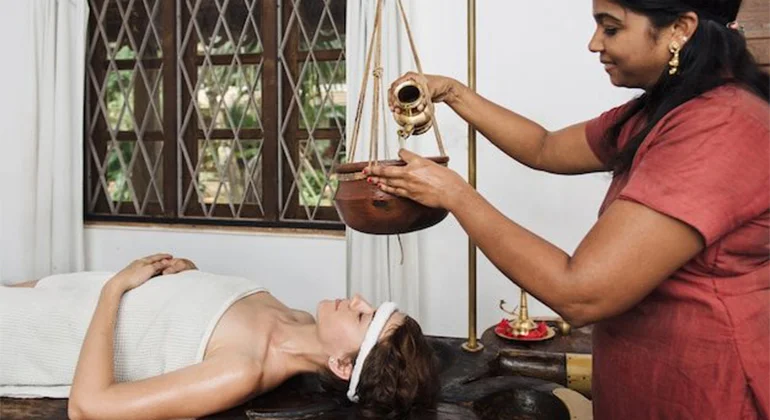
Alternative therapies are different kinds of medical treatments that aren’t part of regular medicine. They can be used along with regular medicine or instead of it. Sometimes people call them “complementary medicine.” When doctors talk about it, they say “Complementary and Alternative Medicine” (CAM).
The National Institutes of Health (NIH) makes a difference between complementary and alternative medicine. They say if it’s used together with regular medicine, it’s complementary. But if it’s used instead of regular medicine, it’s alternative. However, most people use these therapies along with regular medicine.
When a licensed healthcare provider uses both alternative therapies and regular medicine, it’s called integrative medicine. A doctor or healthcare provider who does this uses all kinds of treatments to keep their patients healthy.
This article will tell you about the most popular alternative therapies and how they’re done.
What is Alternative Therapy?
Alternative therapy, also known as complementary medicine, refers to non-traditional medical treatments that are used either alongside or instead of conventional medicine techniques. These therapies encompass a wide range of approaches, including herbal medicine, acupuncture, chiropractic care, meditation, yoga, and many others. The aim of alternative therapy is to promote healing, alleviate symptoms, and improve overall well-being through methods that may differ from those typically practiced in mainstream medicine. While some alternative therapies have been studied and incorporated into mainstream healthcare, others remain controversial and lack scientific evidence of their effectiveness. Nonetheless, alternative therapy continues to be utilized by individuals seeking alternative or holistic approaches to managing their health conditions.
Some Alternative Therapy Categorization?
Alternative therapies can be categorized into several main types based on their approach and methodologies. Here are some common categories:
Mind-Body Therapies: These therapies focus on the connection between mental and physical health. Examples include:
- Meditation
- Yoga
- Tai Chi
- Biofeedback
- Hypnotherapy
Manipulative and Body-Based Practices: These therapies involve physical manipulation or movement of the body to promote health and well-being. Examples include:
- Chiropractic therapy
- Massage therapy
- Osteopathy
- Acupuncture
- Reflexology
Energy Therapies: These therapies are based on the idea that the body has an energy field that can be manipulated to promote healing. Examples include:
- Reiki
- Qi Gong
- Healing Touch
- Crystal therapy
Whole Medical Systems: These are complete systems of theory and practice that have evolved independently of, and often before, conventional medicine. Examples include:
- Traditional Chinese Medicine (TCM)
- Ayurveda
- Naturopathy
- Homeopathy
Biologically-Based Therapies: These therapies use substances found in nature, such as herbs, foods, and vitamins, to promote health and healing. Examples include:
- Herbal medicine
- Dietary supplements
- Aromatherapy
- Naturopathic medicine
Alternative Medical Systems: These are complete systems of theory and practice that are not currently considered part of conventional medicine. Examples include:
- Traditional Chinese Medicine (TCM)
- Ayurveda
- Naturopathy
- Homeopathy
Other Alternative Therapies: This category includes various other alternative therapies that do not fit neatly into the above categories. Examples include:
- Sound therapy
- Art therapy
- Dance therapy
- Hydrotherapy
These categories can sometimes overlap, as some therapies may incorporate elements from multiple categories. Additionally, it’s important to note that while many people find benefits from alternative therapies, they should not be used as a replacement for conventional medical treatment when necessary. Always consult with a healthcare professional before starting any new therapy or treatment regimen.

Exploring Complementary Therapies in Ayurveda
- Meditation.
- Homeopathy.
- Hypnotherapy.
- Acupuncture.
- Yoga.
- Massage.
- Herbal Medicine.
- Chiropractic Medicine.
- Reiki.
Meditation: Meditation is a cornerstone of Ayurveda, offering a profound way to balance mind, body, and spirit. Through focused attention and mindfulness, meditation promotes relaxation, reduces stress, and enhances overall well-being. It is often integrated into Ayurvedic practices to calm the mind, improve mental clarity, and support holistic healing.
Homeopathy: Homeopathy, an alternative therapy aligned with Ayurvedic principles, utilizes highly diluted substances to stimulate the body’s natural healing processes. It operates on the concept of “like cures like” and seeks to address the root cause of ailments rather than merely alleviating symptoms. In Ayurveda, homeopathy is valued for its gentle yet effective approach in restoring balance and promoting health.
Hypnotherapy: Hypnotherapy, when used in conjunction with Ayurveda, taps into the subconscious mind to facilitate healing and transformation. By inducing a state of deep relaxation and heightened awareness, hypnotherapy can help individuals overcome limiting beliefs, manage stress, and address various health concerns. It complements Ayurvedic principles by addressing mental and emotional imbalances to promote holistic well-being.
Acupuncture: Acupuncture, an ancient Chinese therapy, harmonizes the flow of energy (qi) within the body’s meridian channels. When combined with Ayurvedic practices, acupuncture can alleviate pain, improve circulation, and restore balance to the body’s doshas (energetic forces). By stimulating specific points on the body, acupuncture enhances the body’s natural healing abilities and supports Ayurvedic principles of holistic wellness.
Yoga: Yoga is an integral part of Ayurvedic lifestyle practices, offering a holistic approach to health and vitality. Through physical postures, breathwork, and meditation, yoga cultivates harmony between mind, body, and spirit. In Ayurveda, yoga is tailored to individual constitutions and serves as a powerful tool for promoting balance, flexibility, and inner peace.
Massage: Massage therapy plays a vital role in Ayurvedic healing, known as Abhyanga. By using warm herbal oils and specific techniques, Ayurvedic massage aims to detoxify the body, improve circulation, and promote relaxation. It balances the doshas, relieves muscular tension, and enhances overall vitality, making it an essential component of Ayurvedic self-care routines.
Herbal Medicine: Herbal medicine is central to Ayurvedic healing, offering natural remedies to support health and well-being. Ayurvedic practitioners utilize a vast array of herbs and botanicals to address various ailments and imbalances within the body. These herbs are carefully selected based on individual constitution (dosha) and tailored to promote healing, rejuvenation, and overall vitality.
Chiropractic Medicine: Chiropractic medicine focuses on optimizing spinal health and nervous system function to facilitate the body’s innate healing abilities. When integrated with Ayurvedic principles, chiropractic adjustments can help restore alignment, alleviate pain, and enhance overall well-being. By addressing structural imbalances and promoting proper nervous system function, chiropractic care complements Ayurveda’s holistic approach to health.
Reiki: Reiki, a Japanese energy healing technique, aligns with Ayurvedic principles by balancing the body’s subtle energies (prana). Through gentle touch or non-contact methods, Reiki practitioners channel universal life force energy to promote relaxation, reduce stress, and support healing. In Ayurveda, Reiki serves as a complementary therapy to address imbalances in the energetic body and promote holistic wellness.
Exploring the World of Alternative Medicine and Alternative Therapy
Alternative medicine, often referred to as complementary and alternative medicine (CAM), encompasses a diverse range of medical practices and therapies that are not typically included in conventional Western medicine. From herbal remedies to acupuncture, alternative medicine offers a holistic approach to health and wellness, focusing on natural healing methods rather than pharmaceutical interventions.
Types of Alternative Medicine
Herbal Medicine: One of the oldest forms of alternative medicine, herbal medicine involves the use of plants and plant extracts to treat various ailments. Practitioners of herbal medicine believe in the healing properties of botanical substances and use them to address health issues ranging from digestive disorders to skin conditions.
Acupuncture: Originating in ancient China, acupuncture is a practice that involves the insertion of thin needles into specific points on the body to stimulate energy flow and promote healing. Proponents of acupuncture claim that it can alleviate pain, reduce stress, and improve overall well-being.
Chiropractic Care: Chiropractic care focuses on the relationship between the spine and the nervous system, emphasizing manual adjustments to correct misalignments and restore proper function. Chiropractors believe that spinal manipulation can alleviate pain and improve mobility without the need for medication or surgery.
Homeopathy: Homeopathy is based on the principle of “like cures like,” which suggests that a substance that causes symptoms in a healthy person can cure similar symptoms in a sick person when given in highly diluted doses. Homeopathic remedies are believed to stimulate the body’s natural healing mechanisms and restore balance.
Principles Behind Alternative Medicine
Alternative medicine is guided by several core principles that distinguish it from conventional medicine. These principles include a holistic approach to health, which considers the interconnectedness of mind, body, and spirit, as well as an emphasis on natural healing methods that support the body’s innate ability to heal itself.

Benefits of Alternative Medicine
- Reduced Side Effects
- Personalized Treatment
- Focus on Prevention
.Reduced Side Effects: One of the primary advantages of alternative medicine is its focus on natural remedies, which often have fewer side effects than pharmaceutical drugs. Many people turn to alternative medicine to avoid the adverse reactions associated with conventional treatments. .Personalized Treatment: Alternative medicine practitioners take a personalized approach to treatment, considering each individual's unique needs and circumstances. This personalized approach allows for customized treatment plans that address the root causes of illness rather than just the symptoms. .Focus on Prevention: In addition to treating existing health problems, alternative medicine emphasizes the importance of prevention and lifestyle modifications to maintain optimal health and well-being. By addressing underlying imbalances and promoting healthy habits, alternative medicine aims to prevent illness before it occurs.
Common Misconceptions about Alternative Medicine
Despite its growing popularity, alternative medicine is often met with skepticism and misconceptions. Some of the most common misconceptions include the belief that alternative therapies lack scientific evidence and that they are a replacement for conventional medical care.
Integrating Alternative and Conventional Medicine
Rather than viewing alternative and conventional medicine as opposing approaches, many healthcare providers advocate for an integrative approach that combines the best of both worlds. Integrative medicine focuses on complementary therapies that enhance conventional treatments and promote holistic healing.
The Growing Popularity of Alternative Medicine
In recent years, alternative medicine has experienced a surge in popularity as more people seek natural alternatives to conventional treatments. Factors contributing to this trend include increased awareness of alternative therapies, as well as a growing desire for personalized and holistic healthcare options.
Alternative medicine offers a holistic approach to health and wellness, emphasizing natural healing methods and personalized treatment plans. While it may not be a replacement for conventional medical care, alternative medicine can complement traditional treatments and promote overall well-being.
-
Is alternative medicine safe?
Alternative medicine can be safe when practiced by qualified healthcare professionals. It's essential to consult with a knowledgeable practitioner before trying any alternative therapy.
-
Are alternative medicine and complementary medicine the same?
While the terms are often used interchangeably, alternative medicine refers to treatments used in place of conventional medicine, while complementary medicine refers to treatments used alongside conventional medicine.
-
Do alternative therapies have scientific evidence to support their effectiveness?
Some alternative therapies have been extensively studied and shown to be effective for certain conditions, while others may have limited scientific evidence. It's essential to research each therapy thoroughly before trying it.
-
Can alternative medicine cure serious medical conditions?
Alternative medicine should not be used as a sole treatment for serious medical conditions. It can complement conventional treatments and support overall health and well-being, but it's essential to follow the advice of medical professionals.
-
How can I find a reputable alternative medicine practitioner?
When seeking alternative medicine treatments, look for practitioners who are licensed or certified in their respective fields and have experience treating your specific health concerns.


